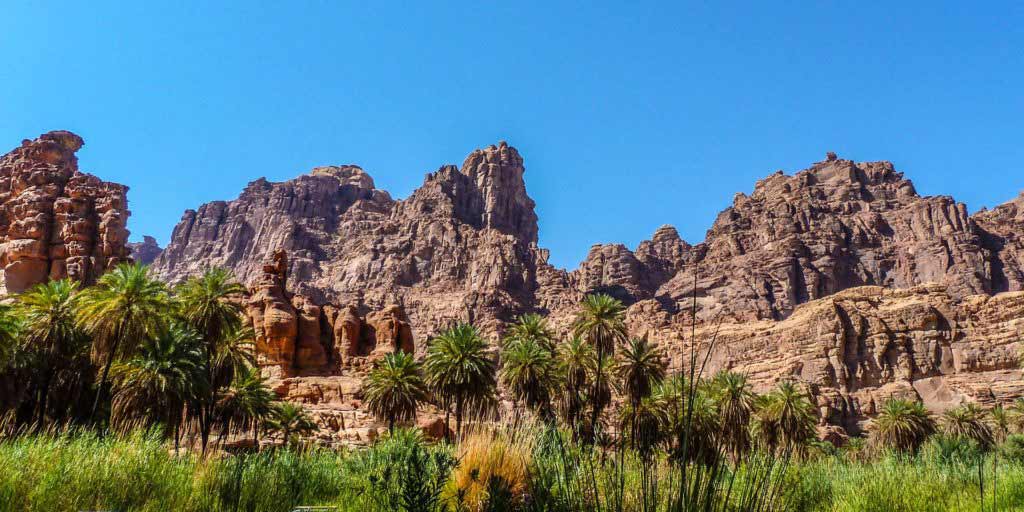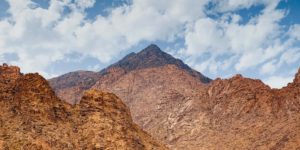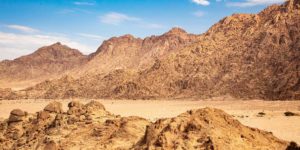Nebuchadnezzar and the Oasis of Tayma in Saudi Arabia

Who is Nebuchadnezzar of the Old Testament in the Bible? To understand who he was and his connection to Tayma, we first need to grasp a certain aspect of ancient writing.
Jewish historians often wrote genealogies to highlight a certain number with concealed meaning. Other times, the genealogy would connect an individual person to a significant occasion. It was not usually done to record every generation from start to finish. Sometimes they skipped a generation while constructing a genealogy with a particular meaning. Each lineage structure painted a particular portrait through the ancestry registered therein. Likewise, each recorded name’s deeper meaning signified much about each person’s character.
Nebuchadnezzar II (634–562 BC) was a powerful king of the Babylonians in ancient history. He conquered the kingdom of Judah, and was responsible for the destruction of the Jewish temple in 588 BC. His successor – after the brief and failed rules of his son-in-law and grandson – was Nabonidus (556–539 BC). He was also considered Nebuchadnezzar’s grandson. It is unclear if he was a true biological descendant or grafted in via political propagation. Nabonidus had a son named Belshazzar who was the last king before the fall of Babylon to the Persian Empire.
The Biblical book of Daniel contains many references to Nebuchadnezzar. He is a chief source of misery for the Jewish people exiled during this period. The reputation of Nebuchadnezzar’s evil empire in the eyes of the Hebrews is clear. Thus, we can surmise that Nebuchadnezzar’s name may have laid upon Nabonidus as well. Nebuchadnezzar’s infamy would pass down by name, declaring Nabonidus was like his grandfather. Further on, we see the Bible name Belshazzar’s father as Nebuchadnezzar. This common Hebraic writing device connects the ancestral line together. In reality, Belshazzar was most likely Nebuchadnezzar’s great-grandson.
So – who is the Biblical Nebuchadnezzar? Most likely, this was both Nebuchadnezzar and Nabonidus. In Middle Eastern literature, it wasn’t always the particular person that mattered. It was the collective actions of a people, and how those actions affected the narrative of the story. History records Nabonidus as spending many years in the Oasis of Tayma. In Daniel’s account of Nebuchadnezzar’s insanity, we can find parallels to Tayma. The account provided by Daniel 4 coupled with extra-Biblical reports on Nabonidus enhance this correlation.
At the end of the twelve months he was walking about the royal palace of Babylon. The king spoke, saying, “Is not this great Babylon, that I have built for a royal dwelling by my mighty power and for the honor of my majesty?” While the word was still in the king’s mouth, a voice fell from heaven: “King Nebuchadnezzar, to you it is spoken: the kingdom has departed from you! And they shall drive you from men, and your dwelling shall be with the beasts of the field. They shall make you eat grass like oxen; and seven times shall pass over you, until you know that the Most High rules in the kingdom of men, and gives it to whomever He chooses.” That very hour the word was fulfilled concerning Nebuchadnezzar; he was driven from men and ate grass like oxen; his body was wet with the dew of heaven till his hair had grown like eagles’ feathers and his nails like birds’ claws. — Da 4:29-33
A scroll fragment (4Q242) found in Qumran (known as the ‘Dead Sea Scrolls‘) has recorded a “Prayer of Nabonidus.” In the text, Nabonidus travels to Tayma to pray to the gods of silver and gold, bronze and iron, wood, stone, and lime. He suffered from an “evil ulcer” until a Jewish exorcist pardoned his sins, and the “Most High God” healed him.
We see a similar prayer of Nebuchadnezzar in the book of Daniel:
And at the end of the time I, Nebuchadnezzar, lifted my eyes to heaven, and my understanding returned to me; and I blessed the Most High and praised and honored Him who lives forever: For His dominion is an everlasting dominion, And His kingdom is from generation to generation. All the inhabitants of the earth are reputed as nothing; He does according to His will in the army of heaven And among the inhabitants of the earth. No one can restrain His hand Or say to Him, “What have You done?” At the same time my reason returned to me, and for the glory of my kingdom, my honor and splendor returned to me. My counselors and nobles resorted to me, I was restored to my kingdom, and excellent majesty was added to me. Now I, Nebuchadnezzar, praise and extol and honor the King of heaven, all of whose works are truth, and His ways justice. And those who walk in pride He is able to put down. — Da 4:34-37
What do you think? Could Nabonidus be the same Nebuchadnezzar from the book of Daniel? And what implications does this have for other historical records from this time period? We seem to be entering an age where God is revealing more and more evidence that the Bible is filled with inerrant truths – not mere stories.
Come join us on our Saudi Arabia tours and visit the Oasis of Tayma yourself! Discover the fascinating mysteries that have unfolded there, and Tayma’s importance to the study of Biblical archaeology.



